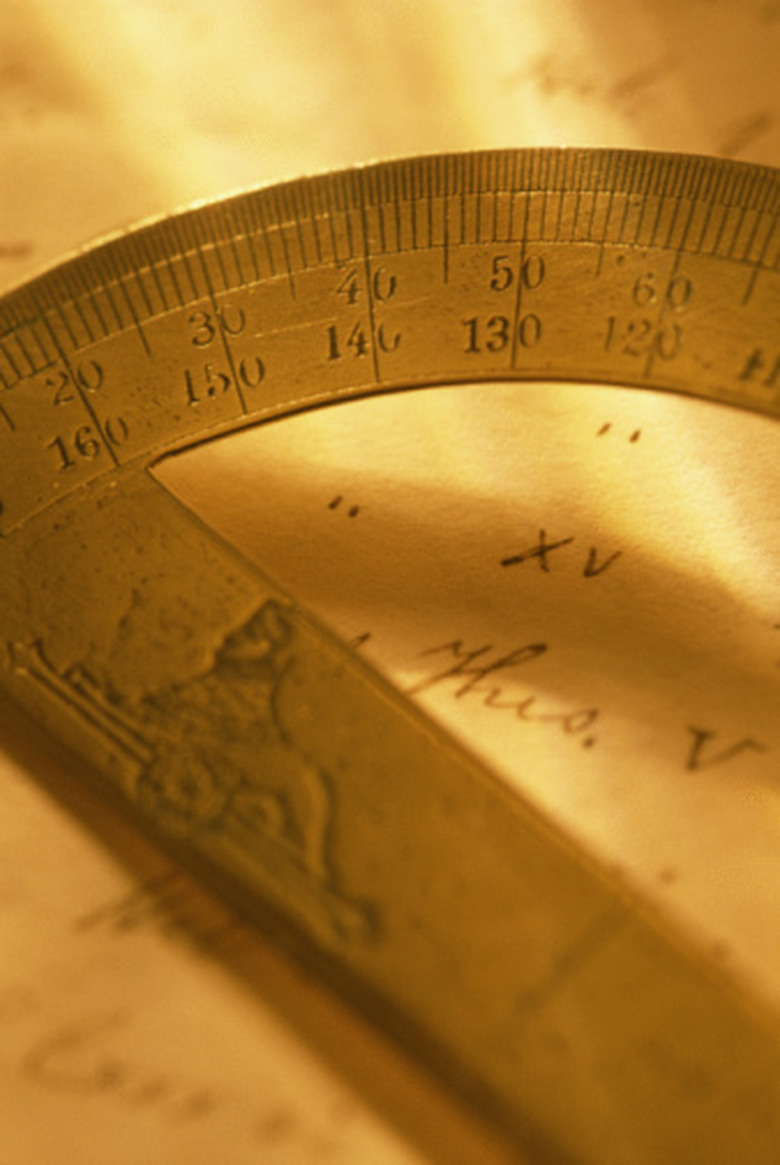Difference Between A Compass & A Protractor
Protractors and compasses are both basic tools for geometric drawing. Students work with them in math classes, while drafting professionals use them on the job. Both tools measure and draw angles and measure distances on maps. But their histories and mechanics, as well as how they are used, are different.
Mechanics
Mechanics
The protractor and compass serve similar functions, but look very different. A protractor is either a circle or a semicircle. Protractors have been around since antiquity, but currently are made of plastic or can be printed out on paper. Compasses, which have also been around for centuries, consist of two legs on a hinge. On one leg is a point or spike, which designates the starting point of a drawing or measurement, while the other point contains either a pen, a pencil or a clasp to hold one.
Use as a Symbol
Use as a Symbol
The compass is known much more as a symbol of intelligence and design than the protractor. Drawings of explorers often depict them with a compass and a map, while some paintings of God at creation show him with a compass (most notably the works of William Blake). Compasses are also used as a symbol of the Freemasons, who view God as the architect of the universe.
Number of Degrees and Flexibility
Number of Degrees and Flexibility
The most common protractor is a semicircle with 180 degrees marked on it. To draw or measure a full circle, you must flip the protractor over. A compass, on the other hand, can draw circles of different diameters depending on the placement of the center point and the length of angle between the center point and pencil. This flexibility is one of the key differences between the tools, making the compass much more adept for drawing and the protractor more for measuring.
Beam Compasses
Beam Compasses
While a protractor is restricted by its size, some special compasses have been created to measure, draw and create circles on a larger scale. Beam compasses are made up of trammels, which are points that can be screwed on with brackets onto a large wooden beam. Beam compasses are also used to score circles on materials like wood, stone or drywall for cutting or decoration. Protractors lack this ability.
Cite This Article
MLA
Koehler, Mike. "Difference Between A Compass & A Protractor" sciencing.com, https://www.sciencing.com/difference-between-compass-protractor-8566512/. 24 April 2017.
APA
Koehler, Mike. (2017, April 24). Difference Between A Compass & A Protractor. sciencing.com. Retrieved from https://www.sciencing.com/difference-between-compass-protractor-8566512/
Chicago
Koehler, Mike. Difference Between A Compass & A Protractor last modified March 24, 2022. https://www.sciencing.com/difference-between-compass-protractor-8566512/
